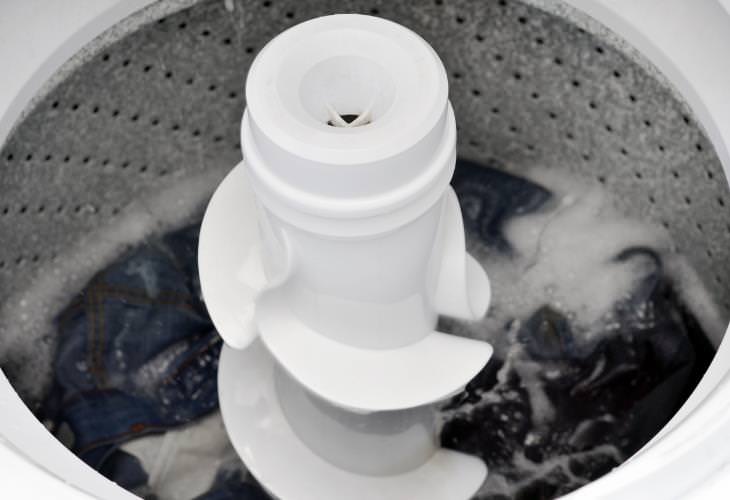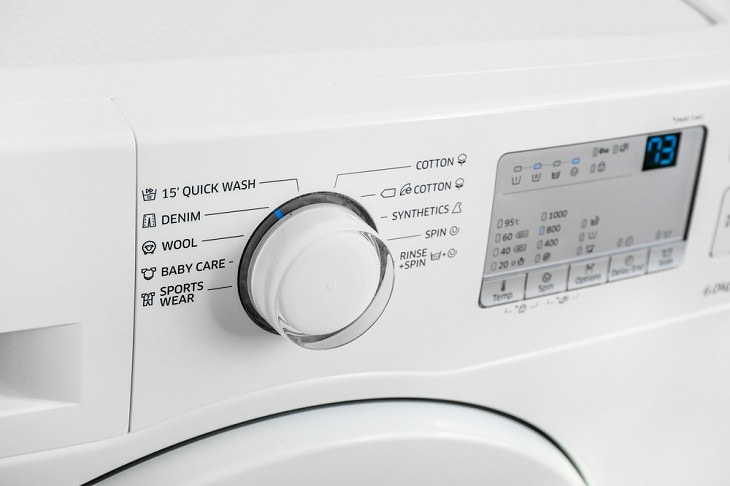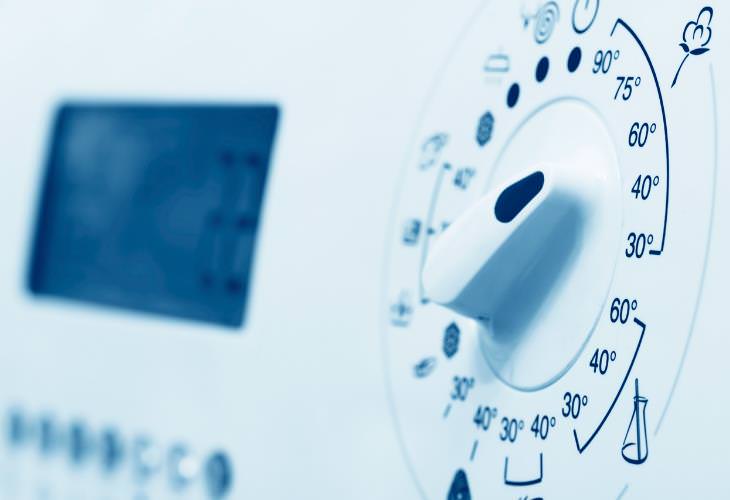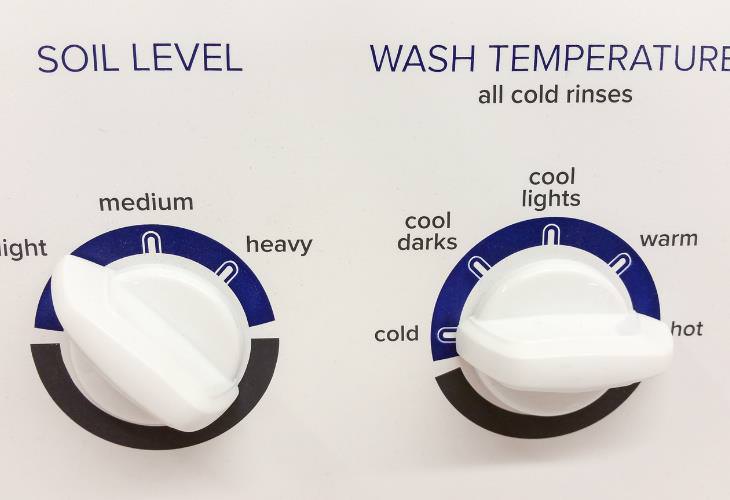Selecting the right washing machine temperature will enable your detergent to work more effectively, and it will also make your clothes last longer. Here are a few things to keep in mind while choosing the temperature to wash your laundry.
Washing Clothes in Hot Water
Hot washes are usually between 60°C (140°F) to 90°C (194°F).
High temperatures are useful for removing heavy dirt, oil, and any other stubborn stains from your clothes. The higher thermal energy of hot water allows the cleaning ingredients to become more active. Therefore, heavily soiled clothes should be washed in hot water. Also, most linens, undergarments and white clothing should be laundered in hot water to remove all the dirt and germs from them.
Hot water is perfect to disinfect dish towels, pillowcases, washcloths, bedding, and diapers as well. It’s also your best option if anyone in the house is ill or has been diagnosed with COVID-19, as hot water will help eliminate the infectious agents from garments. The National Health Service (NHS) says clothes should be washed at a temperature of 60°C to prevent spreading germs.
That being said, hot water can also shrink your clothes or cause them to fade or wrinkle. Also, some fabrics are extra delicate and may not react well to hot water. This is why it’s important to check the specific care label on your garment to see if it can be safely washed in hot water. Another thing to keep in mind while using hot water is to ensure that you keep your whites together and separate light colors from dark ones. You don’t want colors bleeding into each other.
Laundry recommended for washing in hot water: heavily soiled clothes, white cotton clothes, dish towels, pillowcases, diapers, sickbed clothes, and undergarments.
Washing Clothes in Cold Water
20°C (68°F) to 30°C (86°F) are considered cold temperatures.
Cold water is usually ideal for delicates and linens. However, some delicates like sweaters or dry-clean-only items shouldn’t be washed in water, regardless of the temperature. So, it’s always a good idea to check the care tags on them first.
This is the best setting for bright-colored clothes which can fade when washed in hot water. It will also reduce the possibility of clothes shrinking. Experts even say that if you have clothes that don’t have any care labels, laundering them in cold water is your safest bet. You can wash clothes the care label of which recommends warm water in cold water too. According to professionals, you can comfortably go down in recommended temperature, but going up in temperature is a risky move.
One drawback of using cold water is that it's less efficient in removing stains, and you would need to use more detergent. Furthermore, it won't help sanitize clothes. If you have really dirty clothes, you might need to pre-soak them first in a water/detergent solution or set a longer wash cycle to ensure the effectiveness of the wash.
The cold water setting is also the most energy-efficient choice. It will help you cut down your electricity consumption by not having to heat the water.
Laundry recommended for washing in cold water: delicates, linens, dark and bright-colored fabrics, light summer clothing, jeans, and colored clothes with heavy patterns.
Washing Clothes in Warm Water

Between 40°C (104°F) and 60°C (140°F) is considered to be a warm wash.
Most clothing can be washed with warm water since it’s a mix of hot and cold. It should be your go-to setting for washing colored garments and clothing like towels, underwear, and bed linens. Warm washes are also perfect for white clothes that aren’t heavily soiled, as that can help brighten them up. For man-made fabrics like nylon, polyester, and spandex, a warm water setting is ideal. This setting also reduces shrinking, wrinkling, and fading.
Laundry recommended for washing in warm water: most garments, including natural fibers like cotton, synthetics, colored garments, man-made fabrics, undergarments, towels, and even unsoiled white clothes.
Related: For the Good of Your Clothes, Stop These Laundry Mistakes!
The Bottom Line
Washing clothes in cold water should be your go-to choice, as it’s perfectly safe for all kinds of laundry, irrespective of the temperature. It also helps reduce fading and shrinkage. Another benefit of this setting is that it improves the longevity of your clothes and is energy-efficient. Hot and warm water settings, on the other hand, are best for washing heavily soiled clothes. They are also a great option to use when someone in the household is sick to get rid of all the germs from the clothes.
Related: 10 Surprising Items You Can Clean in the Washing Machine
Whatever option you choose, be sure to always check the care labels on them to understand their specific washing instructions first.
Share this post with friends and family...




